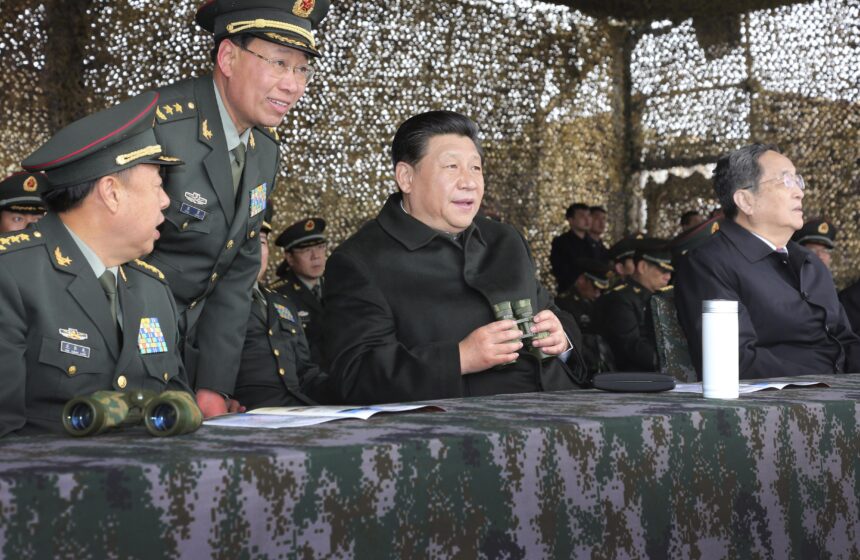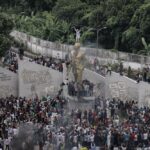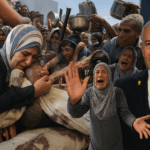Summary by Geopolist | Istanbul Center for Geopolitics:
The article “Turmoil and Transformation: The Reconfiguration of China’s Military Under Xi Jinping” explores significant changes happening in the People’s Liberation Army (PLA) under the leadership of President Xi Jinping.
Xi Jinping is modernizing and streamlining the PLA, emphasizing loyalty to the Chinese Communist Party (CCP) and enhancing its combat readiness. Key changes include restructuring the military command, reducing troop numbers, and focusing on technological advancements. This is done to create a more agile and capable force.
One of the most significant changes is the disbandment of the People’s Liberation Army Strategic Support Force (PLASSF) and its replacement with the Information Support Force (ISF), Aerospace Force, and Cyberspace Force. This shift aims to enhance cyber, space, and information warfare capabilities to prepare the military for modern conflicts and achieve information dominance.
However, the process is not smooth. There is internal turmoil and resistance within the PLA. The PLA has historically resisted control by the Chinese Communist Party, with a tendency towards independence and demands for increased defense budgets.
This ongoing tension complicates Xi Jinping’s efforts to assert the party’s control over the military while pursuing his vision of a “world-class military” by 2049.
The campaign against corruption within the PLA has seen the removal of high-ranking officials, including former defense minister Li Shangfu. Despite these efforts, challenges such as corruption and the need for professionalization remain. These challenges raise questions about the PLA’s ability to meet Xi Jinping’s ambitious goals.
The reforms aim to address past issues of corruption and inefficiency within the military and align China’s defense capabilities with its broader geopolitical ambitions. Xi Jinping’s approach to military modernization is part of a broader strategy to assert China’s influence on the global stage, strengthen national sovereignty, and support the CCP’s domestic legitimacy.
The PLA’s role in projecting power, particularly in regions like the South China Sea and Taiwan, is highlighted as a critical component of China’s strategic objective.
Read more below.
Turmoil and Transformation: The Reconfiguration of China’s Military Under Xi Jinping
Xi Jinping has big dreams for the Chinese military, with the invasion of Taiwan at the top of the list. Ongong turmoil with restructuring efforts however may impede progress as the grinding between political and security centres of gravity contintue to occur.
The organisational structure of China’s military continues to experience significant upheaval. A notable development in this ongoing transformation is the recent disbandment of the People’s Liberation Army Strategic Support Force (PLASSF), an entity established less than a decade ago. On 19 April 2024, the PLASSF was dissolved and replaced by three newly formed forces: the Information Support Force (ISF), the Aerospace Force, and the Cyberspace Force. The Joint Logistics Support Force, meanwhile, has been promoted to become a fourth arm of the People’s Liberation Army (PLA). The four services include the Army, Navy, Air Force, and Rocket Forces with the four arms including the Information Support Force, Aerospace Force, Cyberspace Force, and Joint Logistics Support Force.
This reorganisation signifies a profound shift in the strategic orientation and operational capabilities of the PLA and reflect an ongoing adaptation to modern warfare, which increasingly emphasises cyber operations, space capabilities, and information warfare. The establishment of the ISF, in particular, underscores the heightened importance of information dominance in contemporary military doctrine, a priority likely influenced by current global conflicts such as those in Ukraine and Gaza.
Turmoil in the nearly 97-year-old military is not unknown, however. As it brought the Communist Party into power in 1949, the Red Army turned into the People’s Liberation Army, and was known to bargain hard for privileges, increases to defence budgets, representation, and participation in the decision-making bodies of the country. Given its value as the “protector” of the party, the PLA sometimes showed its teeth and even threatened to “slow down” to get a favourable outcome. In the mid-1960s, it exhibited a perchance for mountaintop sitting—out of the reach of the party’s control mechanisms—and developing “independence.”
Increasingly, it has demanded higher defence allocations from the government, specifically since the 1990s, making it the second largest military budget in the world. China’s Communist Party is aware of the PLA’s praetorian-like demands, a factor that led to its gradual loss of power. Hence, the party has struck back periodically to keep the military confined to the barracks and assert its “absolute power” through a consistant restructuring and modernising drive. Mao Zedong disbanded ranks and military grades in the mid-1960s. Deng Xiaoping accused the PLA of being “bloated, lax, and undisciplined” in 1979 and launched a program for reorganising it towards a “lean and mean” armed forces. Deng disbanded over a million troops in the process, including its Maoist elements.
Xi Jinping dismissed and in many cases arrested several thousands officers and soldiers in the name of curbing corruption. Last year, China’s defence minister, Li Shangfu, disappeared from public view, only to be replaced after several months by Deng Jun. Rocket forces commander Li Yuchao, its commissar Xu Zhongbo, and its deputies Zhang Zhengzhong and Liu Guangbin were also shown the door. PLASSF commander Ju Qiansheng, meanwhile, has gone missing. Aerospace department officials, Liu Shiquan, Wu Yansheng, and Wang Changqing have likewise been dismissed.
Since coming to power in 2012, Xi has launched a major reorganisation of the PLA to “fight and win” future warfare, protect China’s core interests, and acquire regional and global hegemony for Beijing. At the 19th Communist Party Congress in 2017, Xi ordered the PLA to become a “world class military” by 2049. The structure in the PLA at the time however was not tuned for these new requirements, leading to further reorganisation, some of which had begun as early as December 2015 when the PLA was reorganised into five theatre commands. At this time, the four “General” departments (of staff, political, logistics, and armaments) and the newly established PLASSF were brought under the control of the General Office of the Central Military Commission (CMC). By some measures, however, the PLA doesn’t seem to be matching Xi’s ambitions of becoming an expeditionary force firmly under his control, as ongoing corruption evidently continues. A further challenge of professionalisation has discouraged the political leadership. For instance, a Chinese spy balloon was shot down by the United States in early 2023, demonstrating a failure of planning and of command and control. Likewise, the Yuan Wang 5 surveillance ship incident at Hambantota Port, where charges of spying were made, has heightened India’s concerns about the PLASSF’s ambitions in the Indian Ocean.
Xi Jinping’s time as Chairman of the CMC has witnessed increasing turbulence for the PLA forces, in part due to his global ambitions and in part to the inability of the PLA to concomitantly meet new military realities under changing political structures. While Xi has attacked rampant corruption in the PLA through an anti-corruption campaign specifically targeting rival political factional officers loyal to Jiang Zemin, and consolidated his power in the CCP, this consolidation and restructuring remains for the time being incomplete. Recently this campaign targeted his own appointees, such as defence minister (Li Shangfu) and foreign minister (Qin Gang), highlighting ongoing vulnerabilities in civil-military relations. The resulting uncertainty in the PLA raises questions about Xi Jinping’s governance model and his credibility as supreme leader of CMC, and his ambition of endowing China a world class military by the middle of 21st century.







